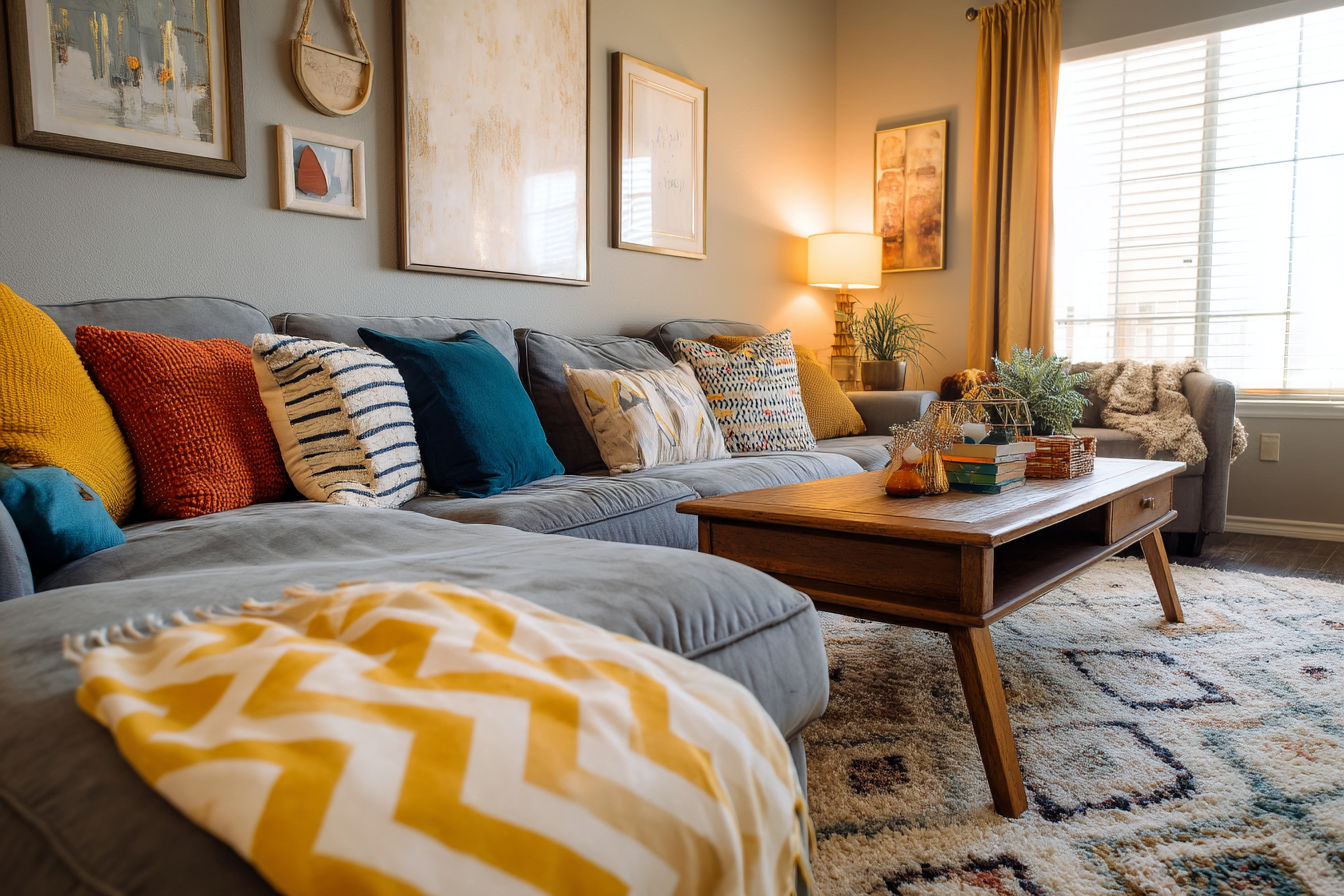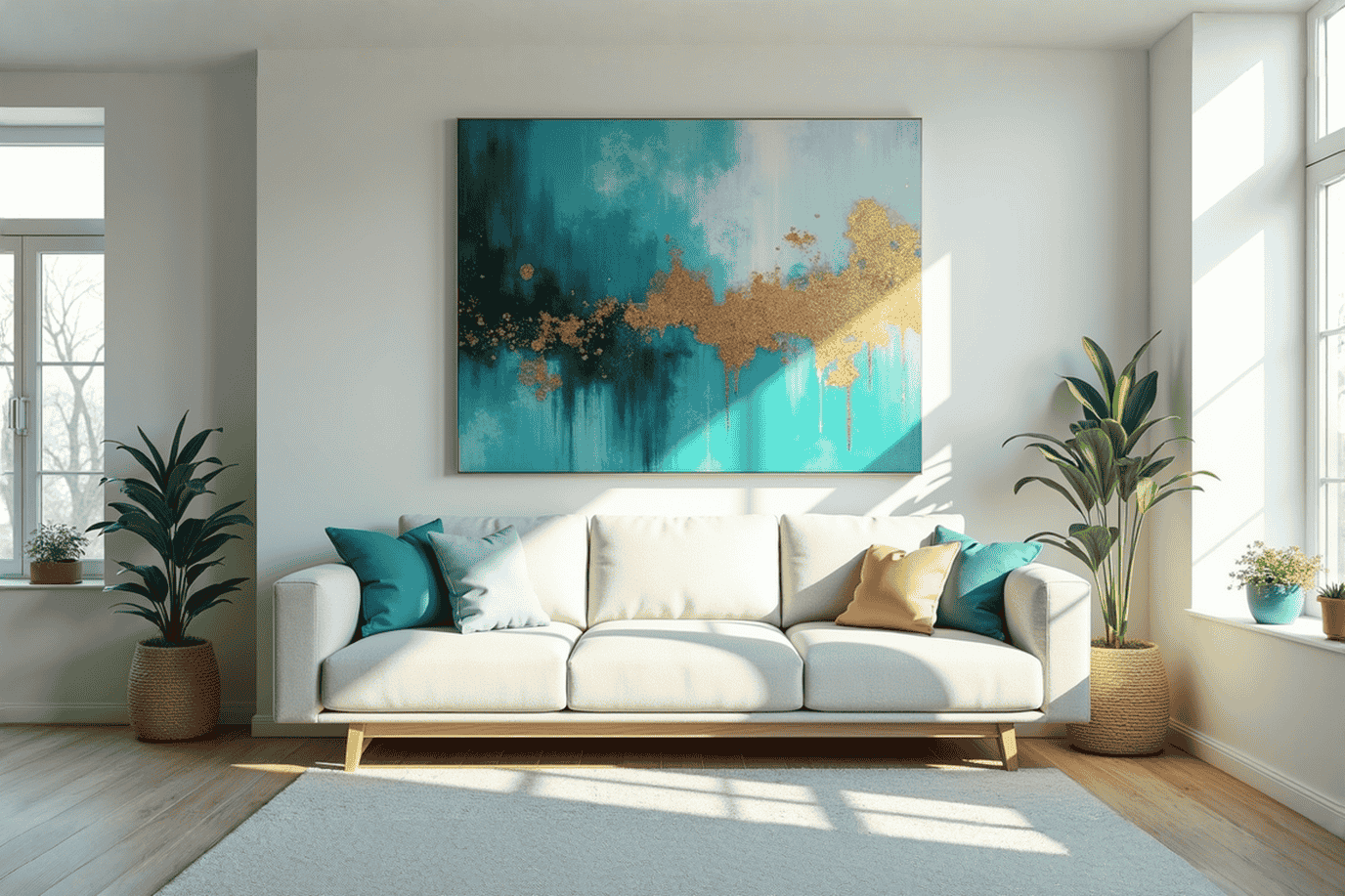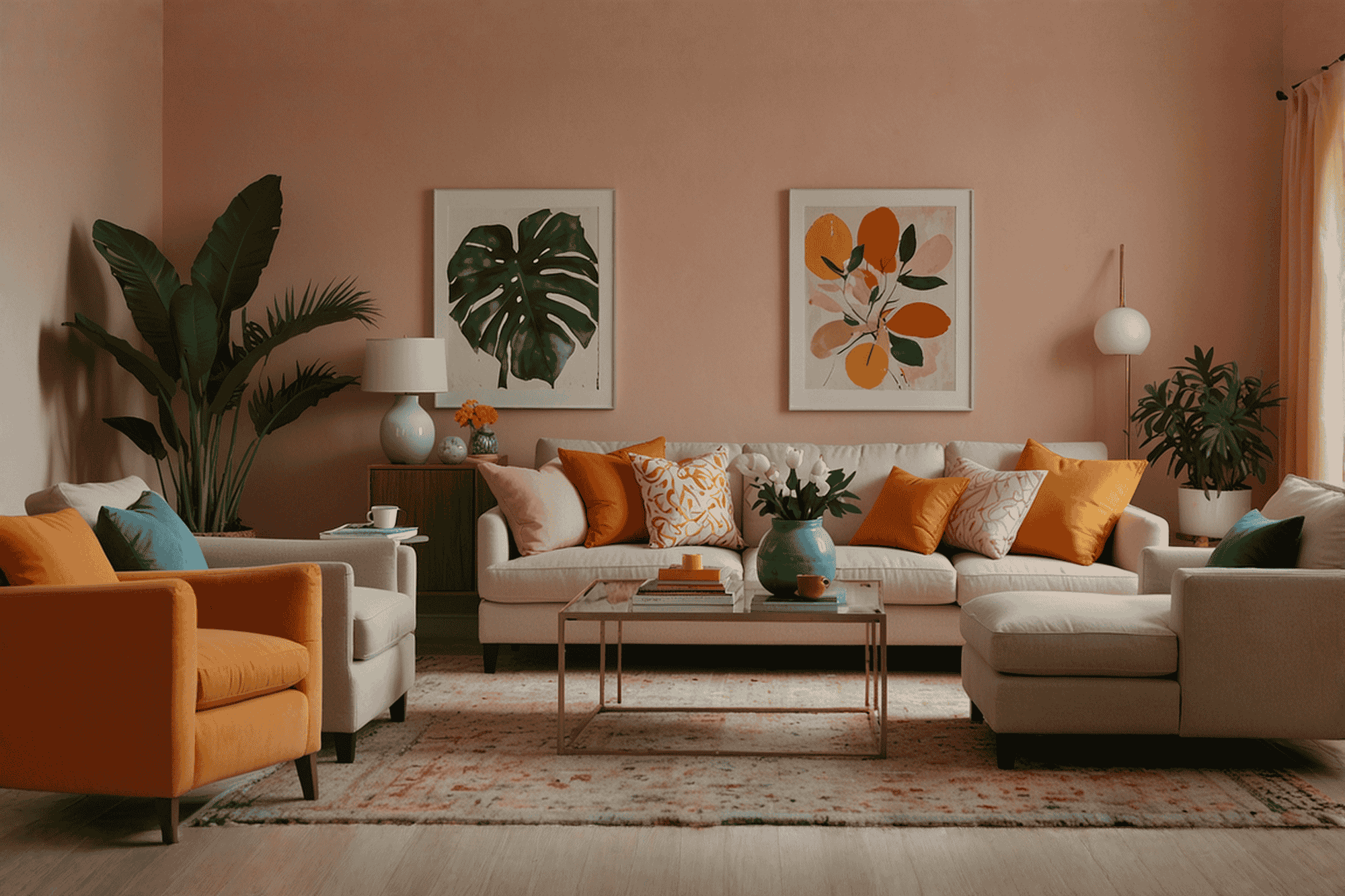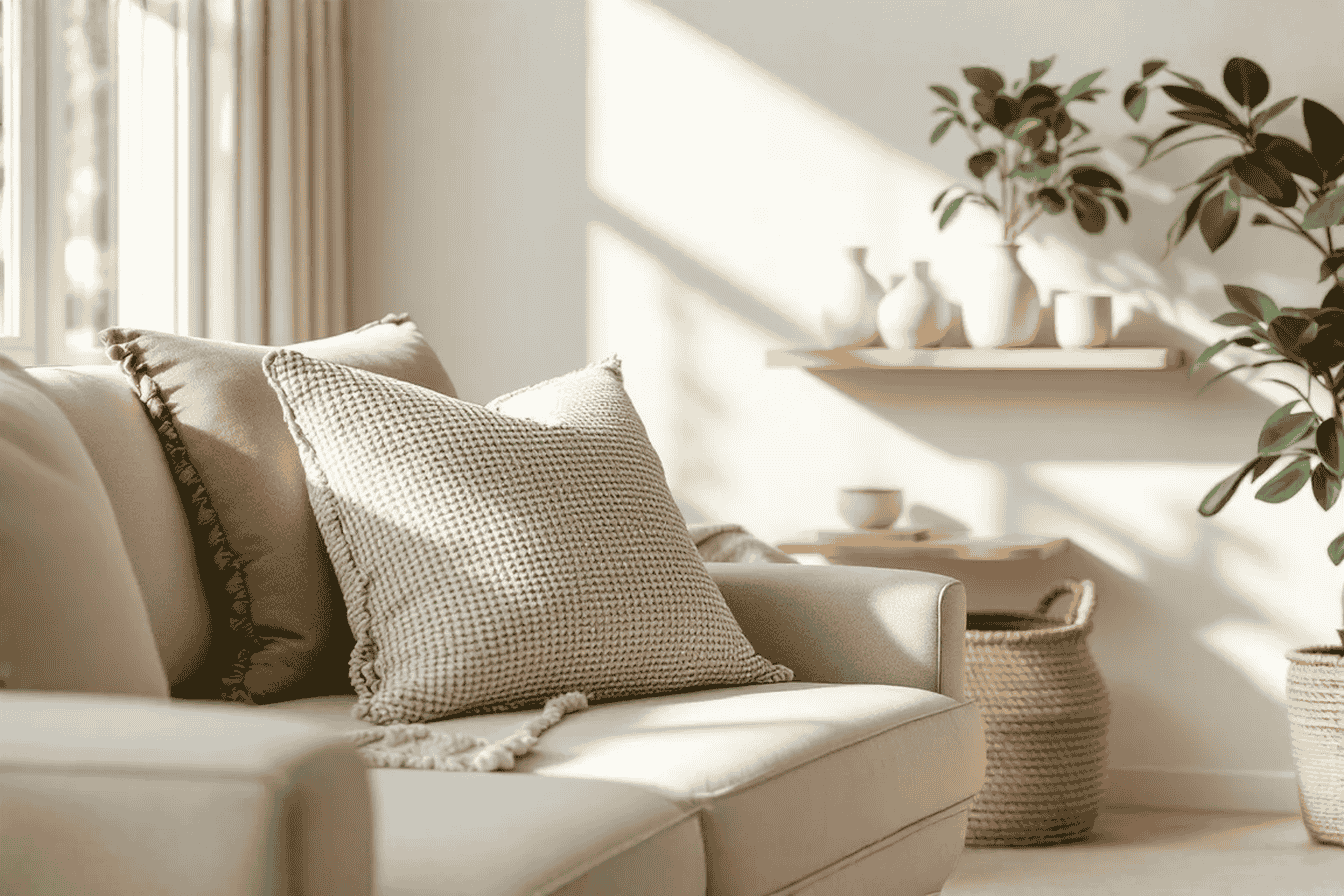This post may contain affiliate links. If you make a purchase through these links, we may earn a commission at no additional cost to you.
Creativity knows no bounds—except perhaps when it comes to physical space. For crafters and hobbyists who find themselves working in apartments, small homes, or shared spaces, the challenge of finding room for supplies while maintaining a functional workspace can seem insurmountable. The pile of fabric scraps, collection of specialized tools, and stacks of materials can quickly transform a tidy corner into a chaotic jumble that stifles rather than stimulates creativity.
Yet the limitations of space need not limit your creative potential. In fact, thoughtful organization within small spaces often leads to greater productivity and enjoyment. When each tool has its place and materials are easily accessible, you spend less time searching and more time creating. The right storage solutions can transform even the tiniest corner into an efficient crafting haven that inspires rather than frustrates.
This comprehensive guide explores eleven innovative approaches to maximizing limited space for your creative pursuits. From vertical storage solutions that utilize overlooked wall space to transformative furniture that adapts to your changing needs, these strategies will revolutionize how you think about your crafting area. Whether you’re a sewer, knitter, jewelry maker, painter, or multi-disciplinary artist, you’ll discover solutions tailored to your specific challenges.
By implementing even a few of these space-saving techniques, you can reclaim your creative joy without requiring an entire dedicated room. Let’s explore how smart design and organization can help your creativity flourish in even the most compact spaces.
1. The Space-Maximizing Magic of Vertical Storage Solutions
When floor space comes at a premium, the walls become your greatest asset. Vertical storage transforms underutilized wall space into valuable organization territory that keeps supplies visible, accessible, and beautifully displayed.
The humble pegboard has evolved far beyond its workshop origins to become a crafter’s best friend. These perforated panels accept a variety of hooks, shelves, and specialized holders that can be rearranged as your needs change. Modern pegboards come in various materials and colors to complement your décor while providing ultimate flexibility. For fabric crafters, installing a grid of pegboard allows tools like scissors, rotary cutters, and rulers to hang within arm’s reach without cluttering valuable table space.
Hanging organizers offer another vertical solution particularly suited to small items. These pocket systems—ranging from over-the-door styles to wall-mounted fabric panels—can hold everything from paintbrushes to spools of thread. The transparent pockets common in many designs allow you to see contents at a glance, eliminating time wasted searching through drawers or bins.
The ceiling represents perhaps the most overlooked storage opportunity in small spaces. Suspended shelving or hanging racks can hold seasonal supplies or less-frequently used materials without consuming precious floor or wall space. Paper crafters can store larger sheets or rolls suspended from ceiling hooks, while yarn enthusiasts might install a simple dowel system for hanging skeins in an organized rainbow.
This approach proves particularly beneficial for crafters working with long, flat materials like fabric, paper, or vinyl that can be rolled and hung rather than folded and stacked. The vertical arrangement prevents creasing while displaying your collection in an aesthetically pleasing manner that might even double as décor.
2. Transformative Furniture: Foldable and Collapsible Workstations
The heart of any crafting space is the work surface, but dedicating floor space permanently to a full-sized table often proves impossible in small living situations. Enter the world of transformative furniture—pieces that appear or disappear according to your needs, literally transforming your space from living area to creative studio in moments.
Wall-mounted folding tables represent the pinnacle of space efficiency. These hinged surfaces attach permanently to a wall and fold flat when not in use, projecting just inches from the wall rather than consuming square feet of floor space. The beauty of fold-down work surfaces lies in their ability to provide full-sized workspace without requiring permanent real estate. Many designs incorporate additional features like built-in storage bins that remain accessible even when the table is folded away.
Drop-leaf tables offer similar advantages with greater flexibility of placement. Unlike wall-mounted options, these can be positioned anywhere in a room and adjusted as needed—fully expanded during intensive project work, partially open for solo crafting, or completely collapsed when not in use. This adaptability makes them ideal for crafters who share their space with family members or roommates.
Murphy-style craft stations take the concept even further by concealing an entire mini-studio behind cabinet doors. When closed, these units resemble standard furniture pieces, but they open to reveal not just work surfaces but also integrated storage for tools and materials. High-end versions might include features like built-in lighting, pegboard backing, or specialized holders for craft-specific tools.
For crafters on an extreme space budget, portable lap desks or folding tray tables provide just enough surface for small projects while storing completely out of sight between sessions. These lightweight solutions allow you to craft anywhere in your home—from the couch to the bed—without requiring any dedicated creative space.
The key advantage of transformative furniture lies not just in its space-saving design but in its rapid setup and breakdown. When crafting time might be limited, these solutions eliminate the barriers between inspiration and creation.
3. Multi-Functional Furniture That Serves Double Duty
While dedicated craft furniture has its place, the most space-efficient approach often involves pieces that fulfill multiple household needs. Multi-functional furniture eliminates the either/or dilemma that small-space dwellers typically face, allowing a single item to serve several purposes throughout the day.
Storage ottomans and benches represent perhaps the most versatile multi-taskers in small homes. These pieces provide seating, surface space (with a tray), and hidden storage simultaneously. Crafters can organize supplies by project inside fabric bins within the ottoman, then simply lift the lid when it’s time to create. The padded top also makes these pieces ideal for activities requiring comfortable seating, such as hand sewing or knitting.
Convertible dining tables adapt to different needs throughout the day, serving as eating space, work-from-home desk, and crafting station. Models with built-in drawers prove particularly valuable, providing accessible storage for frequently used tools without requiring additional furniture pieces. For crafters who enjoy company while creating, these tables allow for both socialization and productivity without requiring separate dedicated areas.
Bed frames with integrated storage drawers or lifting mechanisms transform typically wasted space into valuable supply storage. The substantial area beneath a bed can accommodate flat containers filled with fabric, paper, or other materials that store well horizontally. Since these items remain hidden from view, bed storage proves ideal for supplies used less frequently or materials purchased in advance for future projects.
Coffee tables with lifting mechanisms or hidden compartments serve crafters who prefer working in living areas. These pieces convert from standard height to dining/working height with simple mechanisms, allowing you to transition from relaxation to creation without rearranging furniture. The hidden storage compartments keep supplies organized but invisible when guests arrive.
By carefully selecting furniture that accomplishes multiple functions, small-space crafters can maintain both living comfort and creative capacity without compromise. Each piece earns its place through versatility rather than specialization.
4. Hidden Zones: Transforming Forgotten Spaces into Craft Areas
Every home contains overlooked spaces—those awkward corners, narrow passages, or seemingly unusable nooks that serve no apparent purpose. Creative crafters transform these forgotten zones into productive mini-studios that require no additional square footage yet provide substantial functionality.
The closet conversion represents perhaps the most dramatic transformation. By removing the door and installing shelving, a desk surface, and appropriate lighting, even a small closet becomes a dedicated craft zone that can be concealed behind a curtain when not in use. This approach proves particularly valuable for apartment dwellers prohibited from making permanent alterations to walls. The vertical space above the desk area accommodates shelving for supplies, while the desk itself provides a dedicated work surface that doesn’t encroach on living areas.
Under-stair spaces offer unique opportunities for custom storage solutions. These triangular areas perfectly accommodate graduated shelving for supplies of different sizes, from large paper pads at the tall end to tiny embellishments in the narrower section. For crafters in multi-level homes, this approach reclaims space that typically goes unused while keeping supplies easily accessible.
The area behind doors—particularly in bedrooms or rarely-used guest rooms—provides surprising storage potential. Over-the-door organizers with clear pockets hold small items like buttons, beads, or paint tubes, while specialized racks can store wrapping paper, ribbon spools, or fabric rolls. This approach requires zero floor space while organizing supplies for easy identification.
Window seats with hinged tops or front-access drawers create dual-purpose areas for both storage and relaxation. These built-ins provide ample space for bulkier supplies like batting or yarn stashes while offering comfortable seating for activities like hand sewing or knitting. The natural light from adjacent windows makes these spots particularly appealing for detail work requiring good visibility.
By recognizing the potential in these often-ignored areas, crafters can establish dedicated creative zones that exist independently from primary living spaces, eliminating the need to pack up projects between sessions.
5. Mobile Marvels: Portable Crafting Stations
For crafters sharing living spaces with others or those who simply enjoy changing their creative environment, mobility becomes the ultimate flexibility solution. Portable crafting stations provide freedom from fixed locations while maintaining organization and accessibility.
Rolling carts with multiple tiers have revolutionized the crafting world by combining storage, transport, and workspace in one compact unit. These metal, plastic, or wooden carts typically feature several shelves or drawers that hold supplies categorized by project or material type. The flat top surface provides additional workspace or displays works-in-progress. When crafting time ends, the entire unit rolls into a closet or corner, keeping projects intact until the next session.
Specialized portable organizers designed for specific crafts offer tailored storage for unique tools. Painters benefit from caddies with sections for brushes, tubes, palettes, and water containers, while knitters might choose bags with specialized compartments for patterns, needles, and yarn. These purpose-built carriers facilitate crafting anywhere—from the kitchen table to a park bench—without sacrificing organization.
Collapsible work surfaces on wheels combine the advantages of both transformative furniture and mobility. These units expand to provide substantial workspace when needed, then collapse to minimal footprints for storage. Many include integrated storage compartments that remain accessible even in the collapsed position, allowing projects to remain organized between sessions.
The mobility advantage extends beyond just space savings to include environmental benefits. Jewelry makers might prefer working near natural light by windows during daytime hours but switch to strong task lighting in evenings. Painters might vary their location based on subject matter or lighting needs. The portable approach accommodates these changing requirements without multiple dedicated stations.
For crafters in truly minimal spaces like dormitories or micro-apartments, this approach allows creative pursuits without sacrificing precious square footage to permanent setups. The ability to completely remove crafting equipment from living spaces when needed maintains both organization and domestic harmony.
6. Digital Solutions: Virtual Alternatives to Physical Supplies
While many crafting traditions rely on tangible materials, the digital revolution offers virtual alternatives that dramatically reduce physical storage needs. Digital tools eliminate the bulk of certain supplies while enhancing functionality through searchability and perfect reproducibility.
Pattern libraries represent one of the most significant space-saving opportunities. Traditional paper patterns for sewing, quilting, and other textile arts consume substantial storage space and often become worn with use. Digital pattern collections store hundreds or thousands of designs in zero physical space, while allowing instant access, perfect printing when needed, and the ability to resize or modify designs. Crafters can maintain extensive libraries without dedicated storage furniture.
Design software replaces numerous physical templates, stencils, and drawing tools with virtual versions that never wear out or get lost. Graphic designers and paper crafters can maintain digital collections of shapes, fonts, and designs that would require entire filing cabinets in physical form. The ability to customize these elements for each project surpasses the limitations of physical templates.
Photo documentation of material samples provides reference without storage demands. Fabric collectors can photograph swatches with detailed information about fiber content, source, and quantity, then store the actual fabric more efficiently without losing the ability to browse their collection visually. This approach proves particularly valuable for materials purchased without immediate project plans.
Virtual inspiration boards replace physical bulletin boards covered with tearsheets, color swatches, and reference images. Digital platforms like Pinterest allow unlimited collection and organization of inspirational elements without consuming wall space. The searchability and sharing capabilities extend functionality beyond what physical collections could achieve.
Cloud storage for instructions, tutorials, and reference materials eliminates binders and printed pages that traditionally occupy substantial shelf space. Crafters can access these resources from any device, search by keyword, and maintain perfectly organized collections that travel wherever they go.
While the tactile nature of many crafts requires physical supplies, this hybrid approach—storing what must be physical efficiently while digitalizing everything else—creates significant space savings without sacrificing creative capacity.
7. Wall Wonders: Modular Systems for Ultimate Flexibility
The most effective small-space solutions adapt to changing needs rather than imposing rigid structures. Modular wall systems provide customizable organization that evolves with your crafting journey, accommodating new tools, shifting interests, and growing collections without requiring complete reorganization.
Track-based systems represent the ultimate in adaptability. These installations consist of horizontal rails mounted to walls that accept various components—shelves, containers, hooks, and specialized holders—that can be repositioned instantly without tools. Unlike fixed shelving, these systems allow crafters to adjust storage height, spacing, and configuration as projects or supplies change. Paper crafters might arrange shallow shelves for paper storage, deeper bins for embellishments, and specialized holders for tools, all within the same system.
Magnetic solutions offer similar flexibility for crafters working with metal tools or components. Magnetic strips or boards hold scissors, needles, metal rulers, and other tools in visible, accessible arrangements without permanent mounting. These systems prove particularly valuable for small tools that might otherwise disappear into drawers or containers, wasting precious creating time on searching.
Floating shelves with adjustable internal dividers combine the clean aesthetic of traditional shelving with the adaptability needed for craft supplies. These wall-mounted units maximize vertical space while displaying visually pleasing materials like fabric, yarn, or decorative paper. The adjustable dividers prevent toppling or disorganization while accommodating supplies of varying heights and widths.
Wall-mounted fold-down surfaces integrate seamlessly with these modular systems, providing workspace that disappears when not needed. Models that incorporate their own storage compartments prove particularly efficient, housing commonly used tools or current projects that can remain organized between sessions.
The key advantage of modular systems lies in their ability to grow incrementally as your creative pursuits expand. Rather than replacing entire storage units when needs change, you simply add or rearrange components to accommodate new supplies or interests—a sustainable approach both financially and environmentally.
8. Micro-Organization: Innovative Small-Scale Storage Solutions
While macro-organization addresses the larger challenges of small spaces, micro-organization—the thoughtful arrangement of small components within storage systems—often determines whether a system succeeds long-term. Innovative small-scale solutions transform chaotic collections into accessible, maintainable arrangements that support rather than hinder the creative process.
Drawer dividers and custom inserts transform standard storage into specialized organization for tiny components. Beyond basic grid dividers, crafters can utilize adjustable systems that accommodate oddly shaped tools or create custom inserts from materials like foam core that hold specific items in dedicated spaces. These approaches prevent the dreaded “junk drawer” effect while maintaining visual order that speeds access during projects.
Specialized containers designed for specific crafting components solve unique storage challenges. Bead organizers with screw-top individual compartments prevent mixing of tiny elements, while bobbin boxes keep thread organized and prevent tangling. The investment in these purpose-built solutions pays dividends in time saved and frustration avoided during creative sessions.
Repurposed household items often provide ingenious storage for specific crafting needs. Spice racks transform into perfect holders for small paint bottles, while cutlery trays organize pens, markers, and brushes with surprising efficiency. These creative repurposing solutions save money while providing customized organization tailored to specific supplies.
Labeling systems perhaps contribute most significantly to long-term organization success. Clear, consistent labeling—whether through printed labels, color-coding, or digital QR codes linking to inventory systems—transforms storage from mysterious containers into accessible resource libraries. For shared crafting spaces, standardized labeling proves particularly valuable in maintaining organization across multiple users.
Category-based organization transcends specific containers or furniture pieces to create intuitive systems based on how you actually use supplies. Rather than organizing by type (all paper together, all adhesives together), this approach groups supplies by project or technique. Watercolor painting supplies might live together regardless of whether they’re paper, paint, or tools, mirroring the natural workflow of the creator.
These micro-organization approaches require initial time investment but generate substantial returns through reduced setup time, more efficient creative sessions, and the ability to maintain organization long-term.
9. Light-Maximizing Techniques for Small Craft Spaces
Even the most beautifully organized small space fails if inadequate lighting renders it unusable. Strategic lighting transforms cramped corners into vibrant creative zones regardless of natural light conditions or existing overhead fixtures.
Space-efficient lighting solutions eliminate the need for floor lamps that consume valuable real estate. Wall-mounted swing-arm lamps provide adjustable task lighting without requiring table space, while under-cabinet LED strips illuminate work surfaces without additional fixtures. These options deliver necessary brightness without the footprint of traditional lighting.
Portable task lights offer flexibility for crafters who work in different locations or need different lighting for various projects. Rechargeable LED lamps provide hours of use without cords, while collapsible designs store compactly between sessions. These solutions prove particularly valuable for renters prohibited from installing permanent fixtures or crafters who share multipurpose spaces.
LED technology has revolutionized craft lighting through options like ring lights, light panels, and strip lighting that provide even, shadow-free illumination in minimal space. The energy efficiency and cool operation of these fixtures allow for extended use without overheating small areas, while dimming features accommodate various project needs from detail work to ambient crafting.
Natural light optimization represents the most space-efficient approach, requiring thoughtful furniture placement rather than additional equipment. Positioning work surfaces perpendicular to windows rather than parallel maximizes even light distribution while preventing glare. Reflective surfaces strategically placed can bounce natural light deeper into rooms, enhancing brightness without additional fixtures.
Color temperature considerations particularly impact crafters requiring accurate color representation. Full-spectrum lighting fixtures that mimic natural daylight allow for true color perception regardless of time or weather, while adjustable temperature lights accommodate different crafts—warmer for textile work, cooler for detailed painting or jewelry making.
These lighting approaches complement other space-saving measures while addressing the critical functional need for proper illumination that makes any creative space truly usable.
10. Budget-Friendly DIY Organization Hacks
Commercial storage solutions often come with substantial price tags, but creative DIY approaches achieve similar functionality at fraction of the cost while adding personal flair to your crafting space.
Upcycled containers transform everyday items into specialized storage without financial investment. Glass jars become perfect homes for buttons, beads, and other small components, while wooden wine crates mounted horizontally create unique shelving for fabric or paper storage. These repurposed items often add aesthetic charm beyond their organizational function.
Custom-built shelving tailored to specific supplies maximizes every available inch without the constraints of standard sizing. Simple wooden platforms stacked with spacers create perfect paper storage at exactly the right dimensions, while basic lumber transformed into wall-mounted hanging systems accommodates oddly shaped tools or materials that commercial organizers can’t handle.
Repurposed furniture finds new life through thoughtful modifications. An old dresser becomes a paper storage unit with drawers labeled by color or type, while a vintage suitcase transforms into a portable craft kit with added dividers and tool holders. These transformations often cost nothing beyond basic supplies like paint or hardware.
Handmade dividers and organizers from materials already in your craft stash solve specific organizational challenges without additional purchases. Cardboard reinforced with decorative paper creates sturdy dividers for drawers, while fabric scraps sewn into pocket organizers store small tools. These projects allow you to practice your crafting skills while creating solutions perfectly tailored to your supplies.
The most effective DIY approaches combine aesthetic appeal with organizational function. Rather than hiding supplies away, these solutions often display materials as part of the décor, turning necessity into design feature. Colorful threads arranged in rainbow order or decorative papers visible in clear containers contribute to the visual appeal of your creative space while remaining perfectly organized.
Beyond financial savings, DIY organization provides the satisfaction of creating solutions precisely matched to your unique challenges—the ultimate expression of the maker mindset applied to the crafting space itself.
11. Psychological Benefits: The Joy of an Organized Creative Space
While the practical advantages of organized small spaces remain obvious, the psychological impact of thoughtful organization extends far beyond mere convenience to fundamentally transform the creative experience.
Reduced stress through organization eliminates the subtle but significant anxiety that accompanies creative chaos. When supplies have logical homes and projects remain accessible but contained, the mental bandwidth previously consumed by searching or worrying becomes available for creative thinking. This reduced cognitive load translates directly into more satisfying creative sessions.
Increased productivity emerges naturally from well-designed spaces where tools and materials remain within reach. The flow state so critical to satisfying creative work develops more readily when physical disruptions like searching for supplies or clearing workspace don’t interrupt the process. Even short creative sessions yield significant progress when organization eliminates setup and breakdown time.
Visual inspiration flourishes when supplies remain visible but organized. Unlike storage systems that hide materials away, thoughtful organization that displays colorful yarns, beautiful papers, or interesting components provides constant creative sparking. This visual stimulation often generates unexpected project ideas or innovative combinations of materials.
Mindfulness in crafting environments develops through intentional organization that honors both the crafting process and the materials themselves. Many organizational approaches encourage mindful interaction with supplies—considering each item’s purpose and value before determining its place. This thoughtfulness often extends to the creative process itself, fostering deeper engagement with projects and greater satisfaction with outcomes.
Maintaining organization long-term requires systems that work with rather than against natural tendencies. The most successful small-space solutions acknowledge realistic usage patterns and create intuitive pathways for both using and returning supplies. This sustainability transforms organization from a perpetual struggle into a supportive foundation for creative practice.
Perhaps most importantly, an organized creative space communicates value—both for the creative process itself and for the creator’s time and wellbeing. By carving out and thoughtfully arranging even a minimal space, you affirm that your creative practice deserves attention and care, a psychological benefit extending far beyond mere efficiency.
Conclusion
Limited space need not limit creative potential. The eleven solutions explored in this guide demonstrate that with thoughtful planning and strategic organization, even the smallest corner can transform into a functional, inspiring craft haven. From vertical storage that reclaims wall territory to mobile solutions that adapt to changing needs, these approaches maximize both physical space and creative possibilities.
Implementation works best when approached incrementally. Rather than attempting a complete reorganization, consider starting with the solution most relevant to your specific challenges. Perhaps vertical storage would immediately alleviate your surface clutter, or a foldable work station would provide the dedicated space your projects require. Each improvement builds upon the last, gradually transforming your creative experience.
Remember that effective organization remains deeply personal. While organizational principles apply universally, their application should reflect your unique creative process, physical space limitations, and aesthetic preferences. The systems that support your creativity might look quite different from those that work for others—and that customization represents not compromise but strength.
As you implement these space-saving solutions, consider sharing your innovations with fellow crafters facing similar challenges. The creative community thrives through shared problem-solving and inspirational exchanges. Your unique adaptation of these principles might provide exactly the solution another creator needs.
Ultimately, the joy of creating transcends physical limitations. With these space-maximizing strategies, you can foster that joy in even the most compact environment, proving that creativity flourishes not because of expansive studios but because of passionate creators who refuse to let space constraints diminish their creative vision.






